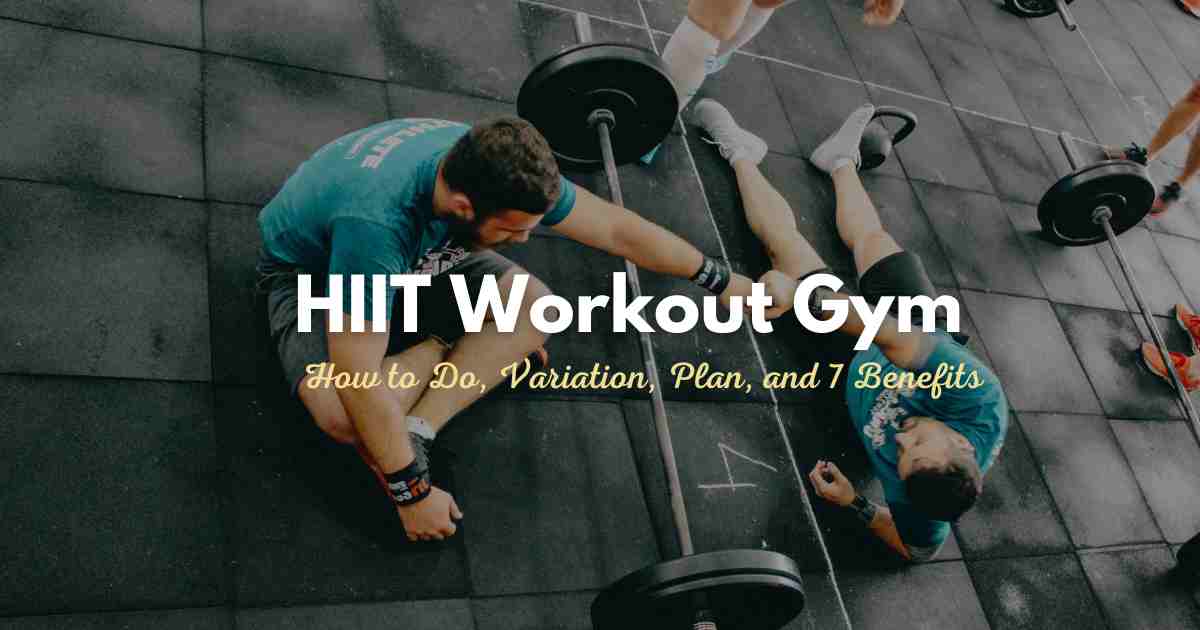Hi-Intensity Interval Training or HIIT has quickly gained popularity across the world of fitness due to its efficacy. Regardless of the level of a person’s physical activities: a professional or just a beginner, HIIT can be easily adjusted to the individual’s needs and expectations. This useful guide will contain information on How to do HIIT workouts and discuss the variety of exercise types, share some schedules for exercising, and outline numerous benefits of HIIT.


What is HIIT?
HIIT can be defined as cardiovascular exercise where individuals perform an exercise, take a short break and then repeat this cycle but at a lower intensity. The approach has a great effect on calorie burning and on cardiovascular and metabolic risk factor profiles in a reasonably short period of time.
1. Choose Your Exercises:
Choose exercises which act on different muscles or those that can be done with added intensity. Such activities may include running for a particular distance, cycling, jogging, running in place, jumping jack, burpee, and strength exercises such as squatting and push-ups.
2. Warm-Up:
Start with a 5 to 10 minute warm up activity in order to make the body ready for the high intensity tasks. This may involve light exercises such as running, skipping or low intensity exercises such as yard movements and high-pitch movements like swinging of legs and arms.
3. Perform the Intervals:
High-Intensity Interval: Concentrate on the chosen exercise exerting maximum effort possible within the 20 to 60 second exercise time. This should be something that you find difficult and it is challenging to you to the extent of your capability.
Recovery Interval: To regulate the HIIT levels, follow with 10-60 seconds of relatively low intensity activity or complete cessation. It is beneficial because it helps your body to relax before the next round of cardio exercise.
4. Repeat:
High-intensity exercise should be followed by resting phases; total workout time should last 15 to 30 minutes in duration based on your fitness levels and workout objectives.
5. Cool Down:
Finish your cool down by using 5-10 minutes of static stretching and some forms of breathing exercises that can assist in reducing your rate of heartbeat and preventing muscles from getting tight.
HIIT Workout Variations
1. Bodyweight HIIT:
Exercises: Admiral singles out jumps with squats, burpees, high knees with mountain climbers, and of course with push-ups.
Format: Every of the above mentioned exercises will be for 30 seconds and then there will be 15 seconds of break time between each set of exercises.
2. Cardio HIIT:
Exercises: Sprinting is running at high speed, cycling is pedaling at top speeds, rowing is paddling at high rate and last but not the least, skipping rope by jumping high.
Format: Exercise: 40sec cardio and then 20sec break, and that’s done continuously.
3. Strength HIIT:
Exercises: Swinging kettlebell, dumb bells snatch, battle ropes, medicine ball toss.
Format: Sets of 30 seconds of strength exercise and followed by 30 seconds of either; resting or moderate aerobic activity.
4. Tabata Training:
Format: Full power burst 20 seconds followed by 10 second break and the cycle was performed for 4 minutes (8 cycles).
Example: Burpees — 20 seconds, rest interval: 10 seconds, 8 rounds in total.
5. Circuit HIIT:
Format: Do 5-6 assorted exercises in a circle with hardly any break in between the circuit. Do the whole circuit 2 to 4 times.
Example Circuit: Running in the spot, stretching, push ups, sitting ups, standing still and then bending down, standing up and again standing in one position.
Sample HIIT Workout Plans
1. Beginner Plan:
Warm-Up: Max heart rate has to be achieved for five minutes of light cardio.
Intervals: 20 seconds high-intensity activities: ( for example: jumping jacks), 40 seconds of rest or low-intensity activities.
Repeat: 10 rounds.
Cool Down: 5 minutes stretching.
2. Intermediate Plan:
Warm-Up: Aerobically it should be 5-10 minutes light warm up exercises and dynamic stretching.
Intervals: Thirty seconds high intensity ( For instance: Burpees,), Thirty seconds Rest.
Repeat: 12 rounds.
Cool Down: 5-10 minutes stretching I found out that stretching is very important in conducting a physical activity since it helps in warming up the muscles to be used during the physical activity.
3. Advanced Plan:
Warm-Up: Dynatech and warm up for 10 minutes, warm up: light warm up with light cardio exercises.
Intervals: High Intensity-45 seconds activity such as running 15 seconds rest low Intensity-45 seconds, activity such as jogging, 15 seconds rest.
Repeat: 15 rounds.
Cool Down: A 10 minutes warm-up using both stretching and foam rolling.
Benefits of HIIT Workouts
1. Efficient and Time-Saving:
HIIT exercises are normally more compact than common cardio, thus suitable for even the tight schedules. You can therefore get good fitness results within 15- 30 minutes.
2. Increased Calorie Burn:
HIIT increases your metabolic rate and therefore helps you burn more calories when doing the exercise and after exercising. This is called excess post-exercise oxygen consumption and can carry on for many hours after the exercising has been done.
3. Improved Cardiovascular Health:
HIIT makes your heart work harder and exercise it in varied zones, and thus, increases your cardiovascular endurance, and heart health in the long-run.
4. Muscle Preservation:
As for body composition training, HIIT is superior to steady-state cardio because the former does not cause as much loss of lean body mass as the latter promotes fat loss.
5. Enhanced Insulin Sensitivity:
HIIT positively affects insulin levels making it easier to regulate blood glucose levels and the occurrence of type 2 diabetes.
6. Increased Metabolic Rate:
The HIIT workouts being more intensive increase your resting metabolic rate and thus, you can use up a lot of energy even when you are inactive.
7. Versatility and Variety:
HIIT is flexible inasmuch as it can be incorporated into the fitness level and preference of a person. Bodyweight exercises involve body weight, equipment or both hence will suit many people since it has a wide range of applicability.
8. Improved Mental Toughness:
The stress that one undergoes during the HIIT is useful in building-enduring mental toughness, which is helpful when facing difficult circumstances.
Conclusion
Some of the benefits associated with HIIT workouts include increased efficiency of workouts, increased caloric expenditure and enhanced health. Thus, one can find that incorporating various exercises and intervals into your routine will help make workouts more interesting and enjoyable while enjoying numerous benefits that this type of training provides. HIIT is not limited to the newcomers but can be easily adjusted according to its progress to the levels of the athletic performance of intermediate and even advanced athletes.
If HIIT interests you and you are ready to start with HIIT, then let’s take a look at the benefits of HIIT. Select one of the sample plans which are given below and gradually increase the intensity and type of exercises as per your exercise tolerance. Please, leave your comments and any questions you may have in the comments section provided below. The following article will help you make that positive change and get yourself on track to a new, healthier and happier you!
Read More
- 7 HIIT Exercises for Weight Loss-Benefits
- How Many HIIT Workouts per Week-Ideas
- HIIT Weight Loss Workout-Benefits-Plan and Result
FAQ’s
Curious about HIIT workout gym? Here are some common questions answered to help you understand the benefits and effectiveness.
Ques1. What is a HIIT class at the gym?
A HIIT class at the gym is a group workout session that involves intense intervals of exercise followed by short rest periods, focusing on boosting cardiovascular fitness and burning calories.
Ques2: Is 20 minutes of HIIT per day enough?
Yes, 20 minutes of HIIT per day can be enough to reap the benefits, as HIIT is designed to be a time-efficient workout that maximizes calorie burn and improves fitness levels in a shorter duration.
Ques3: What are the 7 benefits of HIIT?
The 7 benefits of HIIT include improved cardiovascular health, increased calorie burn, enhanced endurance, efficient fat burning, muscle toning, time-saving workouts, and adaptability to different fitness levels.
Ques4: Can you burn calories with HIIT?
Absolutely! HIIT is known for its ability to burn calories effectively. The high-intensity intervals push your body to work harder, increasing your heart rate and metabolism, resulting in significant calorie burn during and even after your workout.




